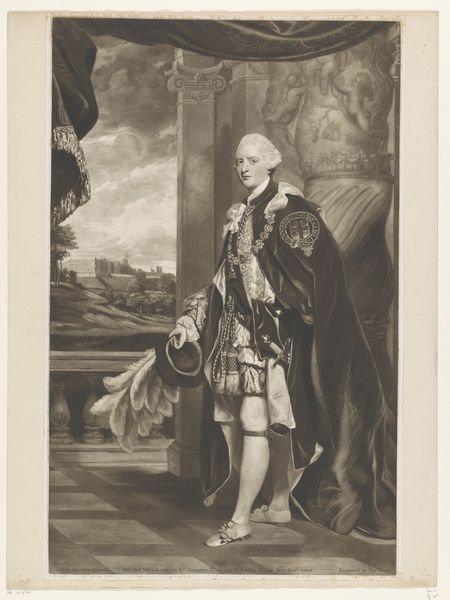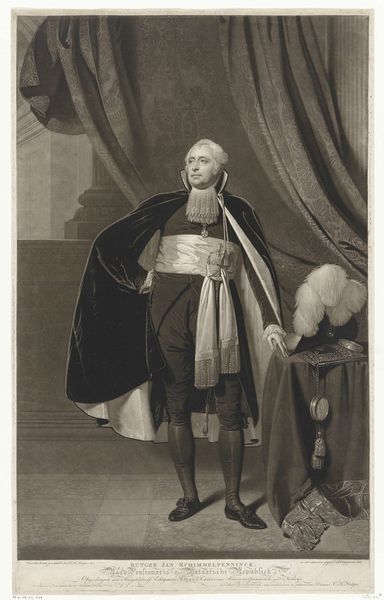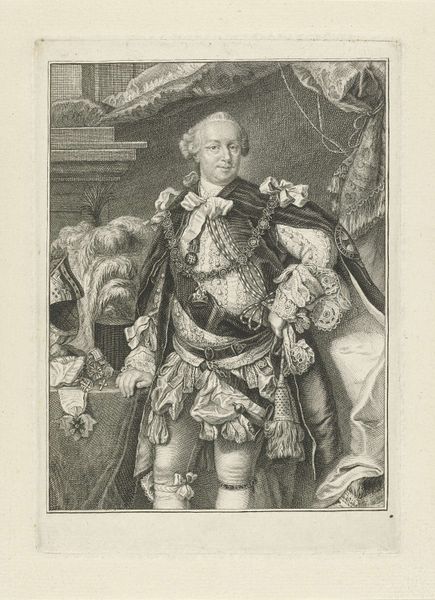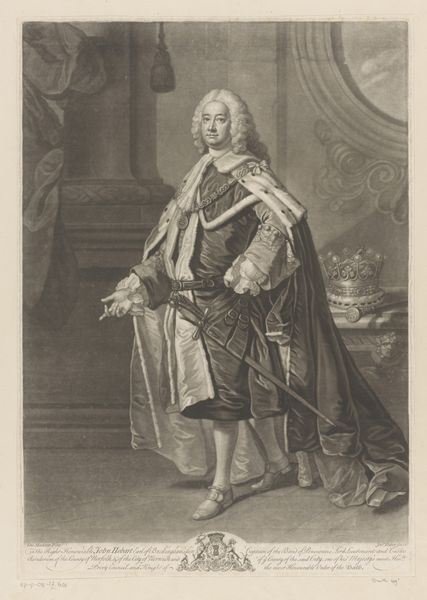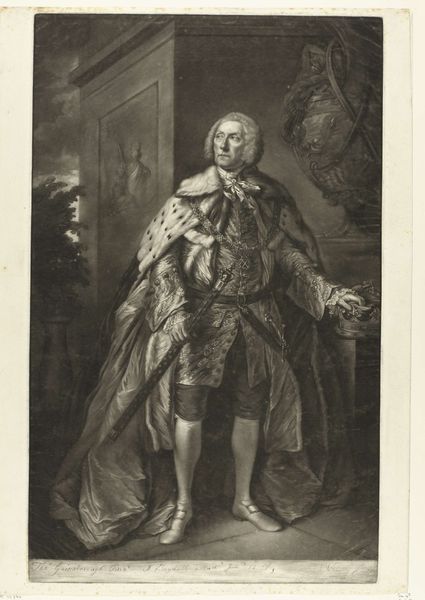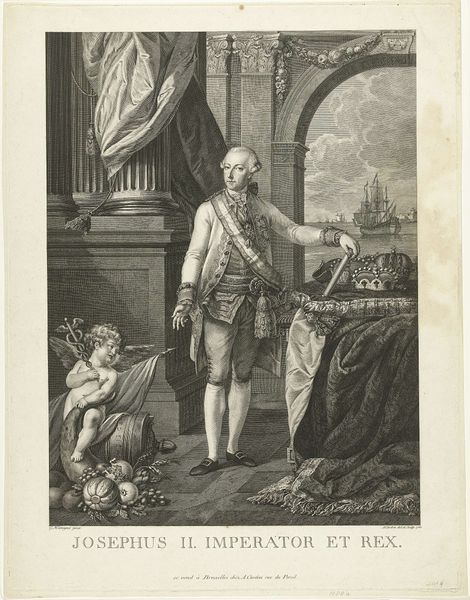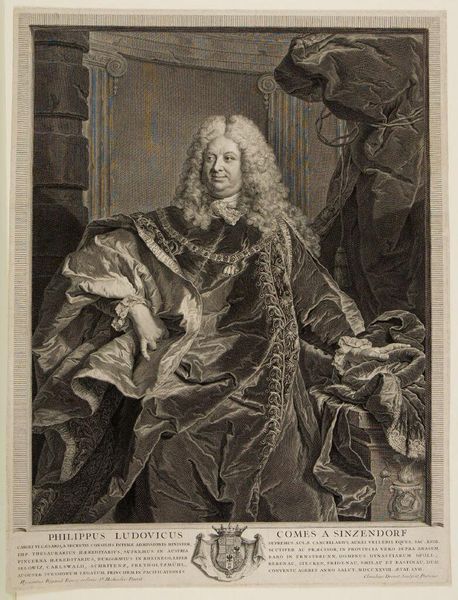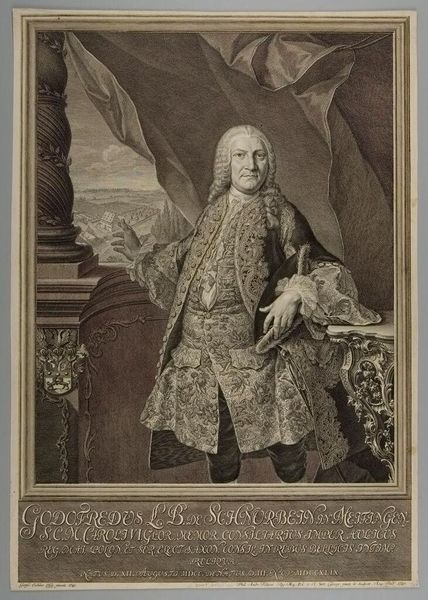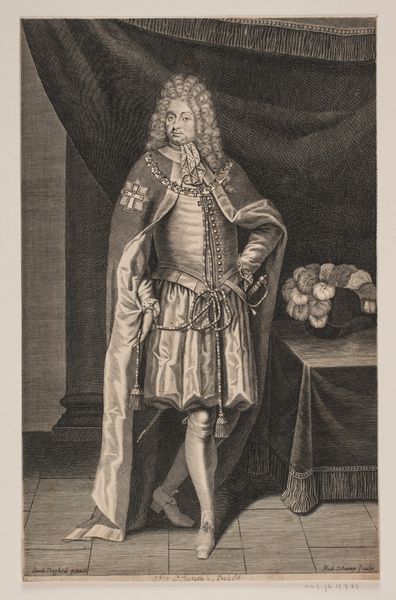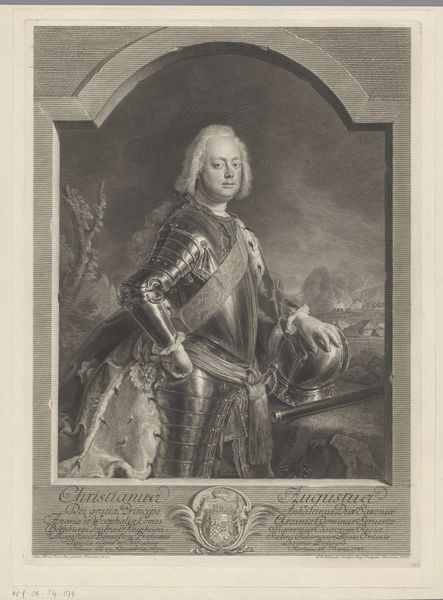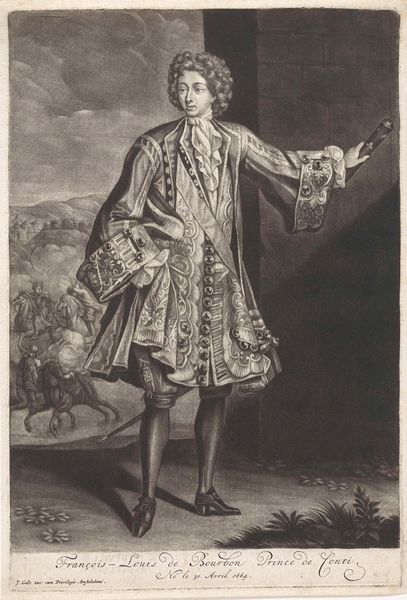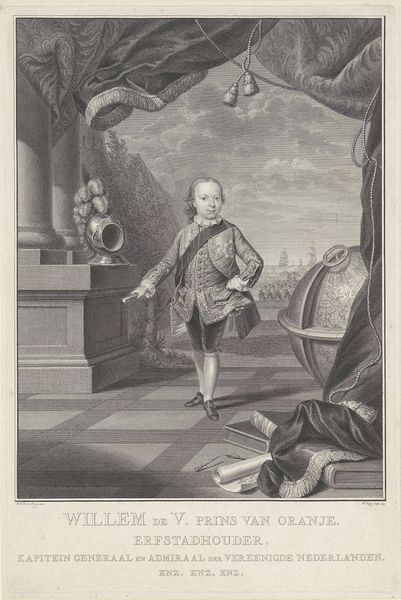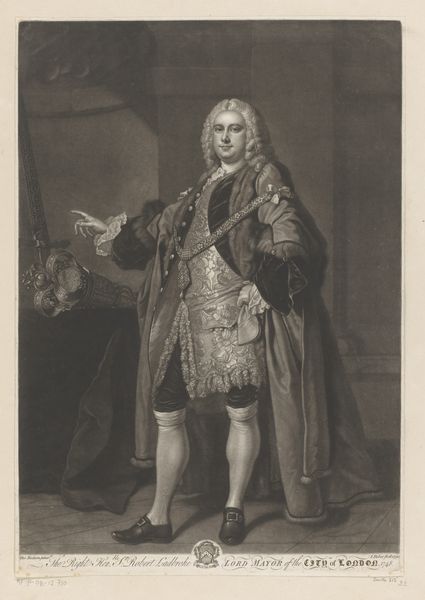
drawing, engraving
#
portrait
#
drawing
#
neoclacissism
#
charcoal drawing
#
charcoal art
#
historical photography
#
19th century
#
history-painting
#
academic-art
#
engraving
Dimensions: height 655 mm, width 455 mm
Copyright: Rijks Museum: Open Domain
Charles Howard Hodges created this portrait of the Duke of Clarence using mezzotint, a printmaking technique that allows for rich tonal range and velvety blacks. The mezzotint process involves roughening the entire copper plate with a tool called a rocker, then smoothing areas to create lighter tones. This labor-intensive method allowed Hodges to capture the textures of the Duke’s elaborate garments and the sheen of his powdered wig. Consider the socio-economic implications of this highly skilled craft. Mezzotint was often used for reproducing paintings, making art accessible to a wider audience, yet the process demanded specialized expertise. Hodges skillfully manipulated light and shadow to convey the Duke's status and character. The velvety blacks emphasize the opulence of his attire, while the carefully modulated tones capture the nuances of his expression. Looking at this print, we can appreciate not only the artistry of Hodges but also the complex relationship between artistic skill, reproduction, and social class in the 18th century. It challenges us to consider the value and meaning embedded in the materials and making of art.
Comments
No comments
Be the first to comment and join the conversation on the ultimate creative platform.
